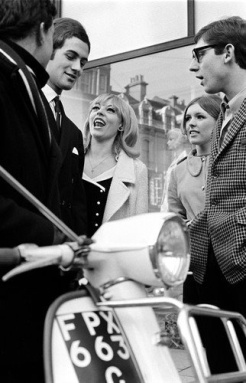Written by LDS, May 2015
“Little masterpieces, that’s what they were. The jewels of the cities and the high streets. Dressed with a stunning precision that spelt obsessive, a minefield of detail from head to toe, a work of art encased in mohair and existing for clothes, music and kicks, Mods listened to the best music, danced the best dances and helped transform British cultural life”.
(Paulo Hewitt on the Gen-1 Mods in ‘A Mod Anthology’, 1999)

So lets continue from where we left off in Mods (Issue 1). We’re currently still in London, the epicentre of a youth rebellion. Its now the early Sixties and change is vogue with major developments just around the corner. The social demographic has shifted to a more youthful Britain following the baby-boom of the Second World War (By the mid-1960’s around 40% of the population were under the age of 25!) and following the Anglo-American Loan (US$57m in today’s money) vast improvements in the social-economic state of the UK were now evident meaning that the kids of the lower ranks of society had it far better than any generation before them had ever known!
“He was fifteen and he was the best-dressed man in the whole big building. He spent more money on clothes in a week than they spent in a month – despite the disparity between their expense account padded salaries and the handful of peanuts in his wage packet…. What was the point of wearing a suit if you looked like a sack of potatoes in it?”
(Tony Parsons in ‘Limelight Blues’)